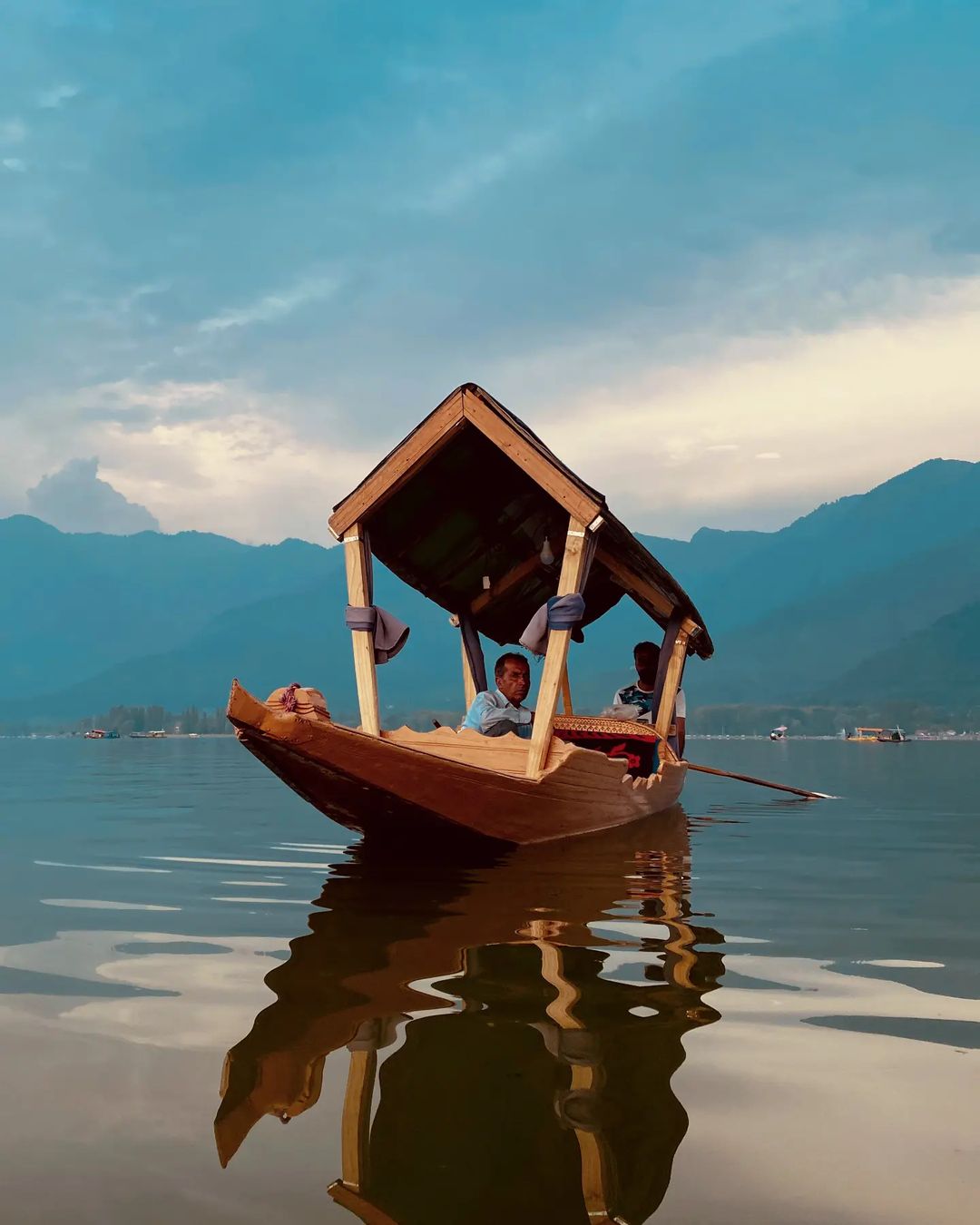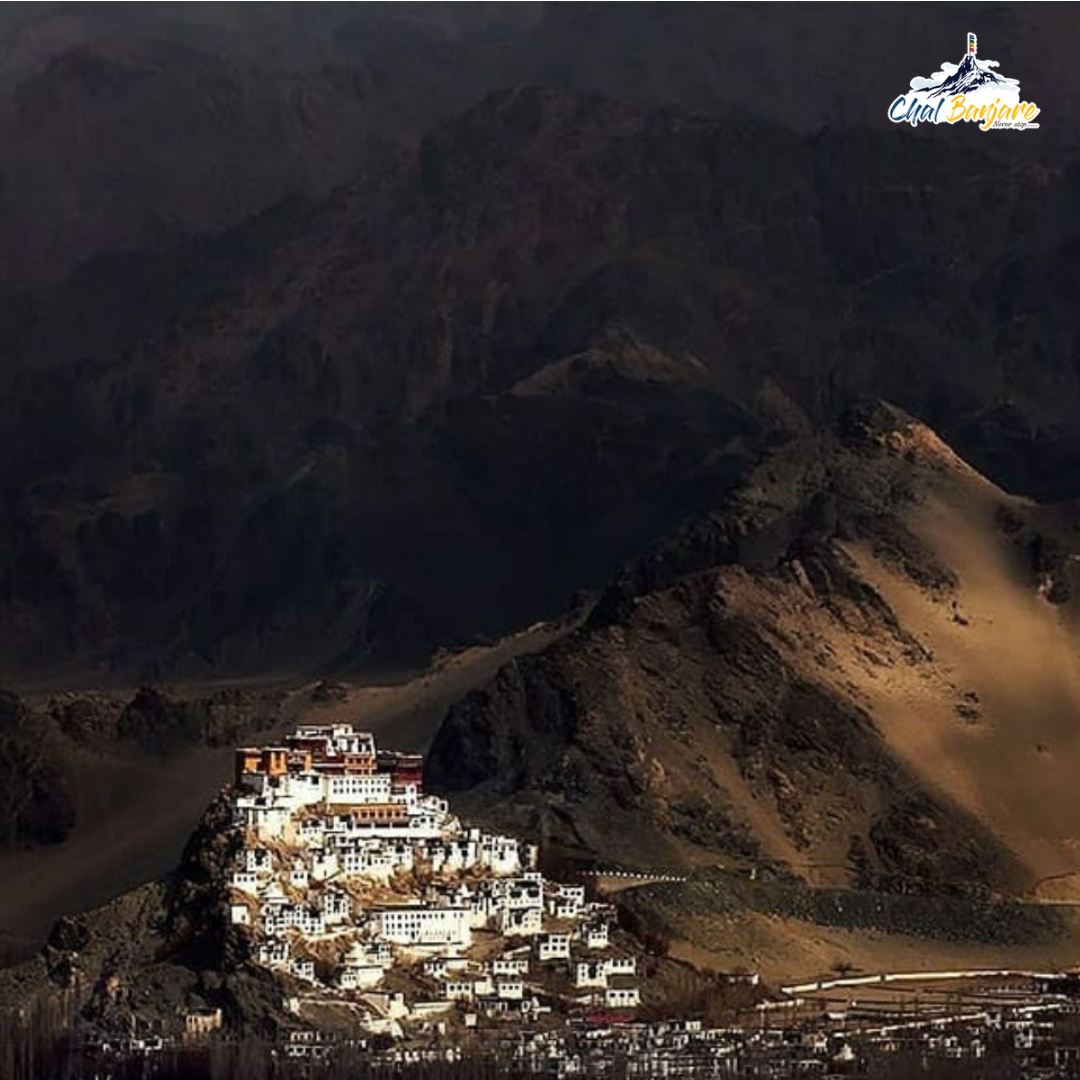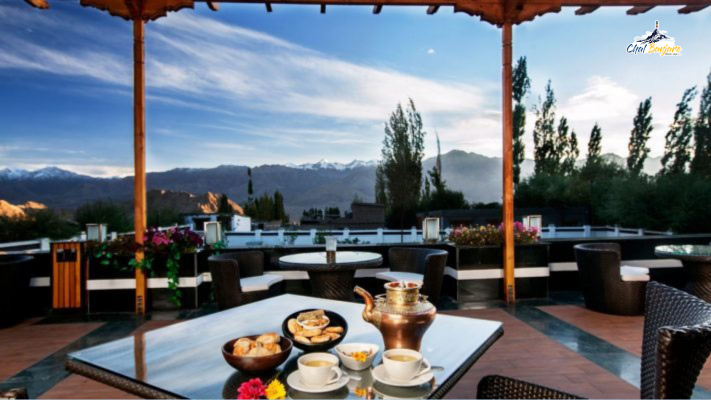
Chashma Shahi
Chashma Shahi or Chashma i Shahi (translation: the royal spring), also called Chashma Shahi, is one of the Mughal gardens built in 1632 AD around a spring by Ali Mardan Khan, a governor of Mughal emperor Shah Jahan as per the orders of the Emperor, as a gift for his elder son Prince Dara Shikoh. The garden is located in the Zabarwan Range, near Raj Bhawan (Governor‘s house) overlooking Dal Lake in Srinagar, Kashmir
Badamwari
The early bloom of flowers on Almond trees in the sprawling historic Badamwari garden in Shahr-e-Khaas has become a source of attraction for nature lovers and tourists, alike. Situated on foothills of Koh-e-Maran, the 300 kanals garden was dotted with trees, flowers and cascades providing a soothing experience to the visitors. Historians maintain there was no record to suggest who laid the garden but they say it existed even before the rule of Sultan Zain-ul-Abidin in the 14th century. A well covered dome in the garden is named after an Afghan ruler, Warris Shah. The bloom on the Almond trees heralded the spring. the garden was revived and formally thrown open for public in 2008
Nigeen Lake
Nigeen Lake (alteratively spelled as Nageen Lake) is a mildly eutrophic. lake located in Srinagar, Jammu and Kashmir, India. It is sometimes considered a part of the Dal lake and is connected to it via a narrow strait. It is also connected to the Khushal Sar and Gil Sar lakes via a channel known as Nallah Amir Khan.
The Nigeen lake is surrounded by a large number of willow and poplar trees. Hence, it has come to be referred as a “nageena”, which means “the jewel in the ring”. The word “nigeen” is a local variant of the same word.
The lake is located adjacent to the Hari Parbat hillock, to the west of the Dal lake. To its north east lies the locality of Hazratbal, which is known for the famous shrine.
The lake is a major tourist attraction in Srinagar, known for its relatively pristine waters as compared to the Dal lake. Houseboats and Shikaras are a usual sight. Its also ideal for swimming, being deeper and less crowded than the Dal lake.
Dal Lake
Dal is a lake in Srinagar (Dal Lake is a misnomer as Dal in Kashmiri means lake), the summer capital of Jammu and Kashmir. The urban lake, is integral to tourism and recreation in Kashmir and is named the “Jewel in the crown of Kashmir” or “Srinagar’s Jewel”.The lake is also an important source for commercial operations in fishing and water plant harvesting.
The shore line of the lake, is about 15.5 kilometres (9.6 mi), is encompassed by a boulevard lined with Mughal era gardens, parks, houseboats and hotels. Scenic views of the lake can be witnessed from the shore line Mughal gardens, such as Shalimar Bagh and Nishat Bagh built during the reign of Mughal Emperor Jahangir and from houseboats cruising along the lake in the colourful shikaras. During the winter season, the temperature sometimes reaches −11 °C (12 °F), freezing the lake.
The lake covers an area of 18 square kilometres (6.9 sq mi) and is part of a natural wetland which covers 21.1 square kilometres (8.1 sq mi), including its floating gardens. The floating gardens, known as “Raad” in Kashmiri, blossom with lotus flowers during July and August. The wetland is divided by causeways into four basins; Gagribal, Lokut Dal, Bod Dal and Nagin (although Nagin is also considered as an independent lake). Lokut-dal and Bod-dal each have an island in the centre, known as Rup Lank (or Char Chinari) and Sona Lank respectively.The houseboats are closely associated with Dal Lake which provide accommodation to tourists in Srinagar.
Hari Parbat Fort
Hari Parbat is also known as Kooh-e-Maran lies on the west of Dal Lake in Srinagar, in the UT of Jammu & Kashmir. This Mughal structure was built by an Afghan Governor Atta Mohammed Khan in 18th century. Later a long wall was constructed in 1590 by Emperor Akbar. Surrounded by commendable structures from all religions, this fort sits at the top giving a spectacular view of Dal Lake.
This fort is maintained by the Archaeological Survey of India (ASI) and still stands impressive with old apartments and tall pillars. Hari Parbat provides a top view of Makhdoom Sahib shrine.
Dachigam National Park
Dachigam National Park is located 22 km (kilometer) from Srinagar in Jammu and Kashmir. It covers an area of 141 sq km (square kilometer). The name literally stands for ‘ten villages’, which could be in memory of the ten villages that were relocated in order to create the park.
Dachigam was initially established to ensure the supply of clean drinking water to Srinagar city. A protected area since 1910, it was declared as a national park in 1981. The park is best known as the home of the hangul, or Kashmir stag. Dachigam is open throughout the year, but the best time to visit is between April and August. The closest airport is at Srinagar. Habitat to Kashmir Stag : Only area where Kashmir stag is found.
Harwan Garden
Harwan Garden, situated in Harwan Village (19 km) from Srinagar is an impressive, large and admired tourist spot. A canal, beautifully bordered with Chinar trees and blossoming flower beds, starting from a lake just behind the garden, flows through the middle of the garden.
The major draw of the Harwan garden is its natural loveliness and charm. With greenery in the backdrop of snowy environment, this garden has big green grass lawns and attracts visitors virtually towards this place.
Reachable by taxis within half an hour, the garden is perfect place for picnics and excursions, also an ideal place for natures walk. It is the gateway to Dachi Gam Wildlife sanctuary.
Harwan Garden
Harwan Garden, situated in Harwan Village (19 km) from Srinagar is an impressive, large and admired tourist spot. A canal, beautifully bordered with Chinar trees and blossoming flower beds, starting from a lake just behind the garden, flows through the middle of the garden.
The major draw of the Harwan garden is its natural loveliness and charm. With greenery in the backdrop of snowy environment, this garden has big green grass lawns and attracts visitors virtually towards this place.
Reachable by taxis within half an hour, the garden is perfect place for picnics and excursions, also an ideal place for natures walk. It is the gateway to Dachi Gam Wildlife sanctuary.
Tulip Garden
Indira Gandhi Memorial Tulip garden, previously Model Floriculture Center, is a tulip garden in Srinagar. It is the largest tulip garden in Asia spread over an area of about 30 hectares. It is situated on the foothills of Zabarwan Range with an overview of Dal Lake. The garden was opened in 2007 with the aim to boost floriculture and tourism in Kashmir Valley. The garden is built on a sloping ground in a terraced fashion consisting of seven terraces. Apart from tulips, many other species of flowers – hyacinths, daffodils and ranunculus have been added as well
Tulip festival is an annual celebration that aims to showcase the range of flowers in the garden as a part of tourism efforts by the Government of Jammu and Kashmir. It is organized during the onset of spring season in Kashmir valley.
Botanical Garden
Botanical Garden was set up in 1969. Situated around the base of a hill overlooking Dal Lake. It contains many types of plants and vegetation. This garden has a collection of about 150,00 ornamental plants and a huge collection of oak varieties. It also has a rare collection of Kashmiri tropical plants.
Many people from various areas of world visit this place. It has four main divisions: the Plant Introduction Centre, the Research Section, the Recreational Garden and the Botanical Garden.
Pari Mahal
Pari Mahal or The Angels’ Abode is a seven terraced garden located at the top of Zabarwan mountain range over-looking city of Srinagar and south-west of Dal Lake The architecture depicts an example of Islamic architecture and patronage of art during the reign of the then Mughal Emperor Shah Jahan.
The Pari Mahal was built by Mughal Prince Dara Shikoh in the mid-1600s. It served as a library and an abode for him. Dara Shikoh was said to have lived in this area in the years 1640, 1645, and 1654. It was further used as an observatory, useful for teaching astrology and astronomy.
It is five-minute drive from Cheshmashahi Garden.
Nishat Garden
Nishat Bagh is a terraced Mughal garden built on the eastern side of the Dal Lake, close to Srinagar in the UT of Jammu and Kashmir, India. It is the second largest Mughal garden in the Kashmir Valley. The largest in size is the Shalimar Bagh, which is also located on the bank of the Dal Lake. ‘Nishat Bagh’ is Urdu, which means “Garden of Joy,” “Garden of Gladness” and “Garden of Delight.
Located on the bank of the Dal Lake, with the Zabarwan Mountains as its backdrop, Nishat Bagh is a garden of bliss that commands a magnificent view of the lake beneath the snow-capped Pir Panjal mountain range that stands far away to the west of the valley. The Bagh was designed and built in 1633 by Asif Khan, elder brother of Nur Jehan.
An interesting anecdote of jealousy of the Emperor Shah Jahan on beholding such a delightful garden, which almost shutdown the garden for some time, is narrated. When Shah Jahan saw this garden, after its completion in 1633, he expressed great appreciation of its grandeur and beauty. He is believed to have articulated his appreciation three times to Asif Khan, his father-in- law, with the hope that he would gift it to him. As no such offer was made by Asif Khan, Shah Jahan was piqued and ordered closure of the water supply to the garden. Then, for some time, the garden was deserted. Asif Khan was desolate and heartbroken; he was uninterested in the sequence of events. When he was resting under the shade of a tree, in one of the terraces, his servant was bold enough to turn on the water supply source from the Shalimar Bagh. When Asif Khan heard the sound of water and the fountains in action he was startled and immediately order closure of water supply as he feared the worst reaction from the emperor for this wanton act of disobedience. Fortunately for the servant and Asif Khan, Shaha Jahan, who had heard about this incident at the garden, was not disturbed or annoyed by the disobedience of his orders. Instead, he appreciated the servant for loyal service to his master and then ordered full restoration rights for the supply of water to the garden to Asif Khan, his Prime Minister and father-in-law. Mughal Princess Zuhra Begum was buried in the garden she was the daughter of Mughal Emperor Alamgir II, and granddaughter of Emperor Jahandar Shah.
Shalimar Garden
Shalimar Bagh is a Mughal garden in Srinagar, linked through a channel to the northeast of Dal Lake, on its right bank located on the outskirts of Srinagar city in Jammu and Kashmir, India. Its other names are Shalimar Garden, Shalimar Bagh, Farah Baksh and Faiz Baksh, and the other famous shore line garden in the vicinity is Nishat Bagh. The Bagh was built by Mughal Emperor Jahangir for his wife Noor Jahan, in 1619. The Bagh is considered the high point of Mughal horticulture. It is now a public park. This time it’s also called as crown of Srinagar.
Related Blog

Blog Categories

Follow us





